Download Pdf [2,77 MB] - MTU Aero Engines
Download Pdf [2,77 MB] - MTU Aero Engines
Download Pdf [2,77 MB] - MTU Aero Engines
You also want an ePaper? Increase the reach of your titles
YUMPU automatically turns print PDFs into web optimized ePapers that Google loves.
The right technologies<br />
at the right time<br />
Sébastien Rémy, VP, Head of CoC Powerplant Airbus S.A.S.<br />
10 Cover Story<br />
Intensive research is undertaken in the engine industry to make tomorrow’s aircraft fuelthriftier,<br />
cleaner and quieter. The aircraft manufacturers, too, are working ceaselessly to<br />
develop new technologies. To learn more about the joint efforts we asked Sébastien Rémy,<br />
Vice President, Head of CoC Powerplant Airbus S.A.S. a few questions.<br />
Mr. Rémy, the European Commission has for<br />
many years sponsored programs to develop<br />
new technologies for engines of the future, a<br />
current example being NEWAC. To what extent<br />
are airframers involved in such programs?<br />
Airbus and engine manufacturers have a long<br />
experience of collaborative work within E.U.<br />
funded frame which has been boosted in the<br />
late 90’/early 2000’ within the EEFAE &<br />
Silencer projects, continued with NEWAC and<br />
now developed with the Clean Sky Programs<br />
(SAGE, SFWA). The Airbus contribution to E.U.<br />
engine led programs always focused on the<br />
evaluation of engine technologies potential<br />
at aircraft level through the definition of generic<br />
aircraft platforms suited to the various<br />
engine options investigated. Final objective<br />
for both engine manufacturers and Airbus is<br />
to get capability to down-select, in a balanced<br />
aircraft level way, the most promising<br />
engine technologies for further developments.<br />
All aircraft manufacturers are presently mulling<br />
over launching a next-generation passenger<br />
aircraft to enter service in 10 to 12 years<br />
at the earliest. In what order of magnitude are<br />
the expected improvements over today’s aircraft<br />
in terms of consumption, emissions and<br />
life-cycle costs?<br />
Airbus is always assessing all options from<br />
continuous improvement of the current product,<br />
with technologies insertion at airframe &<br />
engine level, up to the development of new<br />
airframe combined with new propulsion system.<br />
What drives at the end the selection of<br />
the preferred option is the critical mass of<br />
technological improvement with the related<br />
economical benefits for both OEM and oper-<br />
ators. Expected improvements over the next<br />
couple of decades can easily range from 10 to<br />
35 percent in term of fuel consumption depending<br />
of actual product entry into service<br />
horizon.<br />
Which technical measures will be taken to<br />
make sure these targets are met?<br />
A systematic approach (Technology Readiness<br />
Level) is in place at Airbus to develop<br />
and down-select the most promising technology<br />
options with the ambition to consolidate<br />
the performance potential while reducing the<br />
development risk. This step by step approach<br />
in maturing technologies is well illustrated by<br />
anumber of collaborative E.U. funded projects<br />
covering the full spectrum from academic<br />
work, through scale model tests (typically<br />
Wind Tunnel Tests) up to full scale demonstration<br />
(engine ground test or engine Flying<br />
Test Bed). This systematic down-selection<br />
approach is largely shared between Airbus<br />
and engine manufacturers and has allowed<br />
the introduction of the right technologies at<br />
the right time over the past decades; best<br />
technologies are the ones which find their<br />
route to the market.<br />
Does the industry think about using entirely<br />
new materials that are presently in the development<br />
stage or not even that?<br />
Airbus keeps on developing materials, such<br />
as CFRP, and investigating new materials<br />
which will contribute to aircraft weight reduction,<br />
hence reduced aircraft emissions.<br />
Our vision (and therefore criteria for success)<br />
is however broader, encompassing simplicity<br />
in operation, respecting landscape and biodiversity,<br />
and ecoefficiency (including green<br />
manufacturing and recycling). Some of our<br />
objectives for 2020 are, relative to 2006, to<br />
reduce energy consumption by 30 percent,<br />
CO 2 emissions by 50 percent, water consumption<br />
by 50 percent, water discharge by 80<br />
percent, and waste production by 50 percent.<br />
For instance, significant investment has been<br />
made to eliminate chromates in the painting<br />
process. And water used for surface treatment<br />
can be limited by recycling it, by reducing<br />
evaporation thanks to lower bath temperatures<br />
and by minimising rinse levels as far<br />
as possible. In addition, current practices do<br />
not allow recovering more than, at best, 60<br />
percent (in weight) of aircraft materials. This<br />
situation is no longer acceptable. Not only it<br />
is potentially environmentally damaging<br />
through the release of hazardous materials<br />
Airbus Concept Plane.<br />
and soil pollution, but it also presents safety<br />
risks through the uncontrolled reuse of second<br />
hand spare parts. Last but not least, it is<br />
uneconomical as only a small part of the materials<br />
is recycled. The PAMELA LIFE project,<br />
which supplied its final reports in January<br />
2008, demonstrated that up to 85 percent of<br />
an aircraft’s components can be easily recycled,<br />
reused or recovered, with 70 percent<br />
reuse and recovery. The experience gained in<br />
dismantling and recycling can then be fed<br />
back into the Airbus life cycle (reverse engineering,<br />
manufacturing, supply chain, raw<br />
material etc.), helping to make future aircraft<br />
even easier to recycle.<br />
Which role do the engines play in the achievement<br />
of the ambitious targets?<br />
Future engine technologies are among the<br />
most promising lever arms to improve aviation<br />
efficiency and environmental friendliness.<br />
However, those technologies will only<br />
deliver their full promise in case of a smart<br />
integration to the airframe. This deserves the<br />
cooperation of both actors from the very<br />
early stage of R&T, paving the way to the<br />
optimum airframe/engine technology package<br />
and application. This combined engine/<br />
airframe technologies effort is expected to<br />
deliver as much as 40 percent of fuel consumption<br />
which together with the 10 to 15<br />
percent further reduction expected from<br />
ATM improvements will lead to the 50 percent<br />
fuel reduction ACARE target vs to current<br />
product in operation.<br />
Today’s engines power the aircraft while at<br />
the same time ensuring the energy supply to<br />
the aircraft. Do you think this will also hold<br />
true for future engines or will there be separate<br />
systems?<br />
<strong>Engines</strong> are to date and will remain within the<br />
next decade the most efficient and reliable<br />
energy source on board the aircraft. The objective<br />
of the airframer is to optimize the level<br />
of power-off take which is required from the<br />
engine for non thrust related needs. Some<br />
evolution can be foreseen first in the ground<br />
phase where alternative systems will complement<br />
or take-over from engine, to supply<br />
energy to the aircraft for various functions<br />
(air conditioning…) including taxi phase that<br />
could be assisted with independent electrical<br />
engine fitted on landing gear.<br />
What do you think about the use of the much<br />
discussed fuel cell on aircraft?<br />
Fuel cells can produce electricity in a more<br />
efficient way than combustion engines. They<br />
also offer the perspective to further reduce<br />
aviation emissions footprint. Airbus, DLR and<br />
Michelin have been first, in February 2008,<br />
to fly a commercial airplane with a fuel cell<br />
powering the electric motor pump for the aircraft’s<br />
back-up hydraulic circuit, controlling<br />
the spoilers, ailerons and elevator actuator.<br />
Research activities related to fuel cells are<br />
however at an early stage. Dramatic progress<br />
in fuel cell system power density (ratio of<br />
power produced per unit weight) is still needed<br />
to allow fuel cells to progressively find<br />
their way into commercial aircraft.<br />
For additional information, contact<br />
Odilo Mühling<br />
+49 89 1489-2698<br />
For further information on<br />
this article, go to<br />
www.mtu.de/210Airbus<br />
11


![Download Pdf [2,77 MB] - MTU Aero Engines](https://img.yumpu.com/11154943/6/500x640/download-pdf-277-mb-mtu-aero-engines.jpg)


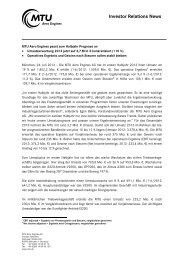
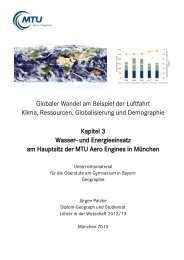
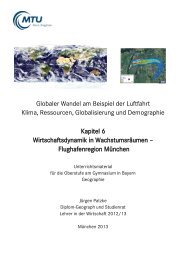
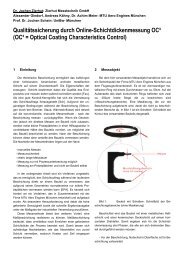
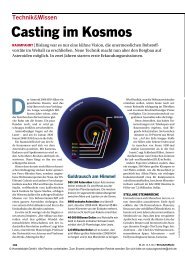

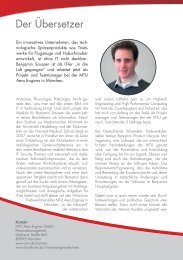
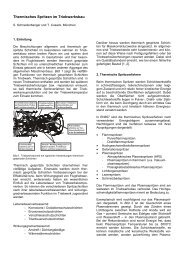
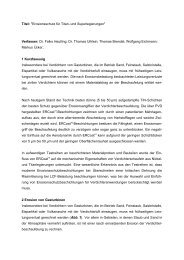


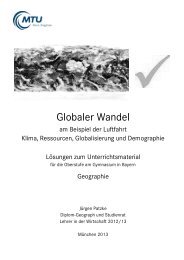
![Download PDF [5,37 MB] - MTU Aero Engines](https://img.yumpu.com/21945461/1/190x125/download-pdf-537-mb-mtu-aero-engines.jpg?quality=85)